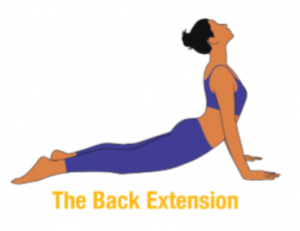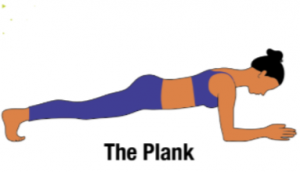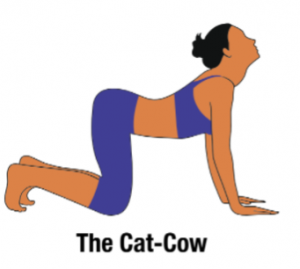FAQ
A spine doctor usually performs the following tests:
- Range of motion test to check back mobility
- Nerve tests to check neurological functioning
- Palpation tests to spot the source of pain
- Blood and urine tests to rule out other problems, like an infection or a kidney stone
- Imaging tests like X-rays and MRIs for diagnosing ongoing pain due to a back injury, nerve problems, or persistent fever
Follow these habits to prevent back pain
- Always stretch before and after workouts or any other physical activity
- When sitting: keep your posture straight, use lower back support, and balance your weight on both legs at all times
- Buy a firm mattress if you don’t already have one with an adequately firm pillow
- Keep your weight close to your BMI
- Avoid heavy weight lifting, and always use your leg strength to lift instead of moving your back
- Avoid smoking as spine degeneration is one of its negative effects
Ask these questions when consulting your spine doctor online or in-office:
- What is causing or worsening my back pain?
- Would surgery be necessary? Are there alternative treatments?
- What other symptoms or health problems can my back pain lead to?
- How long will it take to treat my back pain condition?
- Where can I learn more about managing my back pain in routine life?
A survey conducted by AAPM&R suggests that about one in two people believe that back pain requires surgical treatment. But according to spinal experts, just 5% of back pain cases will be effectively helped by surgery. Hence, experts always exhaust all non-surgical options for back pain treatment before recommending surgery.
You should reach out to a spine specialist when:
- Your back pain persists for three months or more
- Your back pain radiates to other parts of your body
- You have a limited range of back motion with motor weakness, numbness, or tingling
- You have a back injury or accident
- You experience loss of bladder or bowel control with back pain
- You have back pain that worsens at night
Chronic Low Back Pain is when you have persistent or fluctuating pain in your lower back for longer than three months.
Connection Between Your Spine & CLBP
- Your lower back has vertebrae of the lumbar spine that allows forward and backward, as well as twisting movements
- The two lowest segments in the lumbar spine, L5-S1 and L4-L5, carry the most weight and have the most movement, making the area prone to injury.

- Non-specific: No obvious cause
- Traumatic Injuries: Sports, car accidents, or a fall injuring tendons, ligaments, or muscle
Vertebral Disk Problems: Herniated or ruptured discs, disc degeneration
Abnormal Curvature of the spine: Scoliosis or kyphosis.
Medical problems: Fibromyalgia (musculoskeletal
pain) or rheumatoid arthritis (joint pain)
- Age: More common with advancing age and between ages of 30 and 50.
Fitness level: Inactive people with weak back and abdominal muscles may not properly support the
Job-related factors: Jobs requiring heavy lifting, pushing, or pulling, working at a desk
Weight Gain: being overweight or obese puts stress on the back
- Psychological factors: Anxiety, depression, mood, stress can influence the likelihood of experiencing back pain
- Smoking: It can restrict blood flow and oxygen to the discs, causing them to degenerate faster.
- Pain in the lower area of the back
Mobility impairment
- Radiating pain in the lower
- Difficulty in carrying out daily activities
- Difficulty to maintain a standing, sitting or a lying position, especially in case of radiating pain to the lower extremities bending
Diagnosis of CLBP is based on history, symptoms, physical examination and results of diagnostic studies.
When simple treatments are ineffective, your doctor may order imaging studies of the lower back, which may include
- Computed Tomography Scan (CT/CAT scan),
- Magnetic Resonance Imaging (MRI)
- Selective Nerve Root Block
- Discography
- X-rays
- Myelography
CLBP is treated by identifying the cause with a stepped care approach, moving from simple low-cost treatments to more aggressive approaches.
- Medications prescribed by doctor
Hot or cold packs application
Resuming normal activities to ease pain (bed rest not recommended)
Exercises to strengthen core and back muscles
Psychological support
Manual therapy by Chiropractors, Osteopaths or Physiotherapists
Surgery for back pain (recommended if there’s a specific medical reason and when other treatments have not helped
- Simple back exercises and stretches can help reduce back pain. Here are some exercises that will help you relieve CLBP.

The Kneeling Stretch
Kneel on the floor, legs spread
- hip-width apart.
- Sit back on your heels and drop your head down.
- Feel the stretch
- Lift your head up and return to the starting position through your
- Repeat 5 times.

The Knee-to-chest Stretch
- Lie on your back with your knees bent and your feet flat on the fl oor.
- Using both hands, pull and hold both knees to your chest until you feel a slight stretch in your lower back.
- Release your knees and return to the starting position.
- Repeat 5 times.
The Back Extension

- Lie on your chest with your hips fl at.
- Using both hands, push your hands off lifting your head and shoulders.
- Arch your back, straighten your elbows to feel the stretch in the lower back area.
- Return to the starting position.
- Repeat 5 times.
The Plank

- Get into your forearms on the ground.
- Keeping your elbows in line with your shoulders, push up onto your forearms and toes,keeping your back straight and your elbows on the ground.
- Hold for a few seconds, and then lower yourself to the floor.
The Cat-Cow

- Get on your hands and knees, keeping your back straight.
- Round your lower back as much as you can toward the ceiling.
- Then arch your back so that your stomach comes toward the fl oor.
- Repeat 10 times.
Always check first with your doctor before starting an exercise program and get a list of helpful exercises.

